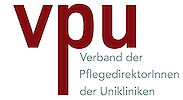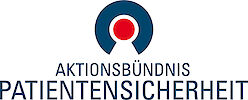Publikationen in Journals/Zeitschriften/Buchbeiträge
2025
- Weigl M, Lifschitz M, Dodt C. Key factors for sustainable working conditions in emergency departments: an EUSEM-initiated, Europe-wide consensus survey. Eur J Emerg Med. 2025 Feb 1;32(1):29-37. https://doi.org/10.1097/MEJ.0000000000001159. Epub 2024 Jul 19. PMID: 39012362; PMCID: PMC11665970.
2024
- Kaltenegger HC, Marques MD, Becker L, Rohleder N, Nowak D, Wright BJ, Weigl M. Prospective associations of technostress at work, burnout symptoms, hair cortisol, and chronic low-grade inflammation. Brain Behav Immun. 2024 Mar;117:320-329. https://doi.org/10.1016/j.bbi.2024.01.222. Epub 2024 Feb 1. PMID: 38307447.
- Burtscher MJ, Koch A, Weigl M. Intraoperative teamwork and occupational stress during robot-assisted surgery: An observational study. Appl Ergon. 2024 Nov;121:104368. https://doi.org/10.1016/j.apergo.2024.104368. Epub 2024 Aug 14. PMID: 39146909.
- Weigl, M., & Wenderott, K. (2024). Versorgungsforschung zum Einsatz von künstlicher Intelligenz in der Gesundheitsversorgung. In Pfaff et al. (Hrsg.) Versorgungsforschung: Theorien–Methoden–Praxis (pp. 583-594). Springer: Wiesbaden. https://doi.org/10.1007/978-3-658-42863-1_43.
- Koch A, Brust L, Weigl M. Barriers and Facilitators of Patient Engagement Activities to Improve Patient Safety in Healthcare Organizations: A Delphi-Based Expert Survey. Risk Manag Healthc Policy. 2024 Dec 19;17:3217-3226. https://doi.org/10.2147/RMHP.S489522.
- Marsall M, Hornung T, Bäuerle A, Weiss ME, Teufel M, Weigl M. Coping difficulties after inpatient hospital treatment: validity and reliability of the German version of the post-discharge coping difficulty scale. J Patient Rep Outcomes. 2024 Nov 5;8(1):125. https://doi.org/10.1186/s41687-024-00806-9.
- Peters, S., Marsall, M., Hasenberg, T., Jahre, L. M., Niedergethmann, M., Teufel, M., & Bäuerle, A. (2024). Acceptance of Digital Discharge Management Interventions Among Patients After Bariatric Surgery: A Cross-Sectional Study. Safety, 10(4), 91. https://doi.org/10.3390/safety10040091.
- Wenderott K, Krups J, Zaruchas F, Weigl M. Effects of artificial intelligence implementation on efficiency in medical imaging-a systematic literature review and meta-analysis. NPJ Digit Med. 2024 Sep 30;7(1):265. https://doi.org/10.1038/s41746-024-01248-9. PMID: 39349815; PMCID: PMC11442995.
- Monaca, C., Weigl, M., Pfaff, H., Hammer, A., Patient involvement in patient safety measures: the impact of demographic and socioeconomic factors – a scoping review. J Public Health (Berl.) (2024). https://doi.org/10.1007/s10389-024-02340-w
- Raab C, Gambashidze N, Brust L, Weigl M, Koch A. Motivation for patient engagement in patient safety: a multi-perspective, explorative survey. BMC Health Serv Res. 2024 Sep 11;24(1):1052. https://doi.org/10.1186/s12913-024-11495-x. PMID: 39261814; PMCID: PMC11391733.
- Brust L, Schmidt-Wolf I, Weigl M. The impact of patient engagement on patient safety in care transitions after cancer treatment: Protocol for a systematic review and meta-analysis. PLoS One. 2024 Aug 27;19(8):e0307831. https://doi.org/10.1371/journal.pone.0307831. PMID: 39190692; PMCID: PMC11349088.
- Brust, L., Koch, A. & Weigl, M. Safety first? Sicherheitsrelevante Ereignisse aus Patientenperspektive. Präv Gesundheitsf (2024). https://doi.org/10.1007/s11553-024-01147-7.
- Burtscher MJ, Koch A, Weigl M. Intraoperative teamwork and occupational stress during robot-assisted surgery: An observational study. Appl Ergon. 2024 Aug 14;121:104368. https://doi.org/10.1016/j.apergo.2024.104368. Epub ahead of print. PMID: 39146909.
- Ansmann L, Nöst S, Körner M, Auschra C, Bal R, Böddeker M, Bode I, Braithwaite J, Breidenbach C, Coors M, Demirer I, Exworthy M, Harst L, Heuser C, Hoffmann J, Köberlein-Neu J, Krajic K, Maniatopoulos G, Mannion R, Möhler R, Pfaff H, Rieger MA, Rind E, Helge Schnack MA, Anke Wagner MA, Weigl M, Wensing M, Wiig S, Wild E, Wilhelm H, Wirtz M, Götz K. Navigating the Future of Organisational Health Services Research in Germany and beyond: a Position Paper. Gesundheitswesen. 2024 Jul 22. English, German. https://doi.org/10.1055/a-2308-7384. Epub ahead of print. PMID: 39038484.
- Weigl M, Lifschitz M, Dodt C. Key factors for sustainable working conditions in emergency departments: an EUSEM-initiated, Europe-wide consensus survey. Eur J Emerg Med. 2024 Jul 19. https://doi.org/10.1097/MEJ.0000000000001159. Epub ahead of print. PMID: 39012362.
- Bäuerle A, Marsall M, Niedergethmann M, von Feilitzsch MF, Frewer AL, Skoda EM, Pouwels S, Hasenberg T, Teufel M. Adherence to Dietary Behavior Recommendations Moderates the Effect Between Time Since Metabolic and Bariatric Surgery and Percentage Total Weight Loss. Obes Surg. 2024 Jun 18. https://doi.org/10.1007/s11695-024-07359-2. Epub ahead of print. PMID: 38890217.
- Gambashidze N, Marsall M, Schmiedhofer M, Blum K, Roesner H, Strametz R, Weigl M. Development and validation of a short clinical risk management implementation (Short CRiMI) questionnaire. Z Evid Fortbild Qual Gesundhwes. 2024 May 17:S1865-9217(24)00082-5. https://doi.org/10.1016/j.zefq.2024.04.003.
- Geiger, S., Esser, A.J., Marsall, M. et al. Association between eHealth literacy and health outcomes in German athletes using the GR-eHEALS questionnaire: a validation and outcome study. BMC Sports Sci Med Rehabil 16, 117 (2024). https://doi.org/10.1186/s13102-024-00902-9
- Marsall M, Hornung T, Bäuerle A, Weigl M. Quality of care transition, patient safety incidents, and patients' health status: a structural equation model on the complexity of the discharge process. BMC Health Serv Res. 2024 May 3;24(1):576. https://doi.org/10.1186/s12913-024-11047-3. PMID: 38702719; PMCID: PMC11069201.
- Marsall M, Dinse H, Schröder J, Skoda EM, Teufel M, Bäuerle A. Assessing Electronic Health Literacy in Individuals With the Post-COVID-19 Condition Using the German Revised eHealth Literacy Scale: Validation Study. JMIR Form Res. 2024 Apr 25;8:e52189. https://doi.org/10.2196/52189.
- Roesner H, Blum K, Gambashidze N, Schmiedhofer M, Weigl M, Strametz R. Determinants influencing implementation of clinical risk management – Qualitative results of a national survey among clinical risk managers in Germany (KHaSiMiR21). Journal of Patient Safety and Risk Management. 2024;0(0). https://doi.org/10.1177/25160435241240831
- Marsall M, Weigl M, Schmiedhofer M, Blum K, Rösner H, Strametz R, Gambashidze N. Strategien des Entlassmanagements in deutschen Allgemeinkrankenhäusern : Deutschlandweite Befragung von Verantwortlichen des klinischen Risikomanagements [Discharge management strategies in German general hospitals : A nationwide survey of professionals responsible for clinical risk management]. Bundesgesundheitsblatt Gesundheitsforschung Gesundheitsschutz. 2024 Mar 1. German. https://doi.org/10.1007/s00103-024-03846-0
- Marcus HJ, Ramirez PT, Khan DZ, Layard Horsfall H, Hanrahan JG, Williams SC, Beard DJ, Bhat R, Catchpole K, Cook A, Hutchison K, Martin J, Melvin T, Stoyanov D, Rovers M, Raison N, Dasgupta P, Noonan D, Stocken D, Sturt G, Vanhoestenberghe A, Vasey B, McCulloch P; IDEAL Robotics Colloquium. The IDEAL framework for surgical robotics: development, comparative evaluation and long-term monitoring. Nat Med. 2024 Jan;30(1):61-75. http://doi.org/10.1038/s41591-023-02732-7. Epub 2024 Jan 19.
- Wenderott K, Krups J, Luetkens JA, Weigl M. Radiologists' perspectives on the workflow integration of an artificial intelligence-based computer-aided detection system: A qualitative study. Appl Ergon. 2024 Feb 1;117:104243. http://doi.org/10.1016/j.apergo.2024.104243. Epub ahead of print. PMID: 38306741.
- Wenderott K, Krups J, Luetkens JA, Gambashidze N, Weigl M. Prospective effects of an artificial intelligence-based computer-aided detection system for prostate imaging on routine workflow and radiologists' outcomes. Eur J Radiol. 2024 Jan;170:111252. http://doi.org/10.1016/j.ejrad.2023.111252. Epub 2023 Dec 6. PMID: 38096741.
- Kaltenegger HC, Marques MD, Becker L, Rohleder N, Nowak D, Wright BJ, Weigl M. Prospective associations of technostress at work, burnout symptoms, hair cortisol, and chronic low-grade inflammation. Brain Behav Immun. 2024 Feb 1;117:320-329. http://doi.org/10.1016/j.bbi.2024.01.222. Epub ahead of print. PMID: 38307447.
- Tlili MA, Aouicha W, Gambashidze N, Ben Cheikh A, Sahli J, Weigl M, Mtiraoui A, Chelbi S, Said Laatiri H, Mallouli M. A retrospective analysis of adverse events reported by Tunisian intensive care units' professionals. BMC Health Serv Res. 2024 Jan 16;24(1):77. http://doi.org/10.1186/s12913-024-10544-9. PMID: 38229159; PMCID: PMC10790372.
2023
- Koch, A., Gambashidze, N., Weigl, M.: „Einbeziehung von Patient:innen zur Förderung von Patientensicherheit in Gesundheitseinrichtungen in Deutschland“, in: „Monitor Versorgungsforschung“ (06/23), S. 74–78. http://doi.org/10.24945/MVF.06.23.1866-0533.2567
- Becker, L., Kaltenegger, H. C., Nowak, D., Rohleder, N., & Weigl, M. (2023). Differences in stress system (re-) activity between single and dual-or multitasking in healthy adults: a systematic review and meta-analysis. Health Psychology Review, 17(1), 78-103. https://doi.org/10.1080/17437199.2022.2071323
- Marsall, M., Hornung, T., Bäuerle, A., Weigl, M. Measuring Transitional Patient Safety: Adaptation and Validation of the German Version of the Care Transitions Measure. Z Evid Fortbild Qual Gesundhwes. 2023. https://doi.org/10.1016/j.zefq.2023.10.002
- Körner M, Dinius J, Ernstmann N, Heier L, Bergelt C, Hammer A, Pfisterer-Heise S and Kriston L, Effectiveness and feasibility of an interprofessional training program to improve patient safety—A cluster-randomized controlled pilot study. Front. Psychol. 2023. 14:1186303. https://doi.org/10.3389/fpsyg.2023.1186303
- Weigl, M., Heinrich, M., Rivas, J. et al. Teamwork and mental workload in postsurgical pediatric patient handovers: Prospective effect evaluation of an improvement intervention for OR-PICU patient transitions. Eur J Pediatr (2023). https://doi.org/10.1007/s00431-023-05241-4
- Bäuerle A, Marsall M, Jahre LM, Rammos C, Mallien C, Skoda E-M, Rassaf T, Lortz J, Teufel M. Psychometric properties of the German revised version of the eHealth literacy scale in individuals with cardiac diseases: Validation and test of measurement invariance. DIGITAL HEALTH. 2023;9. https://doi.org/10.1177/20552076231194915
- Becker L, Kaltenegger HC, Nowak D, Weigl M, Rohleder N. Biological stress responses to multitasking and work interruptions: A randomized controlled trial. Psychoneuroendocrinology. 2023 Aug 2;156:106358. https://doi.org/10.1016/j.psyneuen.2023.106358. Epub ahead of print. PMID: 37542740.
- Marsall M, Engelmann G, Teufel M, Bäuerle A. Exploring the Applicability of General Dietary Recommendations for People Affected by Obesity. Nutrients. 2023; 15(7):1604. https://doi.org/10.3390/nu15071604
- Koch, A., Quartucci, C., Buchner, A., Schlenker, B., Becker, A., Catchpole, K., Weigl, M., Associations of flow disruptions with patient, staff, and process outcomes: a prospective observational study of robotic-assisted radical prostatectomies. Surg Endosc (2023). https://doi.org/10.1007/s00464-023-10162-2
- Kaltenegger, H.C., Becker, L., Rohleder, N., Nowak, D., Quartucci,C., Weigl, M., Associations of technostressors at work with burnout symptoms and chronic low-grade inflammation: a cross-sectional analysis in hospital employees. Int Arch Occup Environ Health (2023). https://doi.org/10.1007/s00420-023-01967-8
- Wenderott, K., Franz, S., Friedrich, M.G., Boos, M., Job demands at the patient’s bedside and their effects on stress and satisfaction of nurses, BMJ Open Quality 2023;12:e002025. https://doi.org/10.1136/bmjoq-2022-002025
- Marsall M., Bäuerle, A., Hasenberg, T., Schräpler, L., Robitzsch, A., Niedergethmann, M., Teufel, M., Weigl, M. Quality of Care Transition During Hospital Discharge, Patient Safety, and Weight Regain After Bariatric Surgery: a Cross-Sectional Study. Obesity Surgery 2023. https://doi.org/10.1007/s11695-023-06486-6
- Stefan, P., Pfandler, M., Kullmann, A., Eck, U., Koch, A., Mehren, C., Heide, A. von der, Weidert, S., Fürmetz, J., Euler, E., Lazarovici, M., Navab, N., & Weigl, M. (2023). Computer-assisted simulated workplace-based assessment in surgery: Application of the universal framework of intraoperative performance within a mixed-reality simulation. BMJ Surgery, Interventions, & Health Technologies, 5(1), e000135. https://doi.org/10.1136/bmjsit-2022-000135
- Hornung, S., Weigl, M., Lampert, B., Seubert, C., Höge, T. & Herbig, B. (2023). Arbeit und Gesundheit: Angewandte Psychologie für die Arbeitsmedizin. Pabst Publishers: Lengerich
2022
- Brösterhaus M, Hammer A, Gruber R, Kalina S, Grau S, Roeth AA, Ashmawy H, Groß T, Binnebösel M, Knoefel WT, Manser T. Using the Global Trigger Tool in surgical and neurosurgical patients: A feasibility study. PLoS One. 2022 Aug 16;17(8):e0272853. doi: 10.1371/journal.pone.0272853. PMID: 35972977; PMCID: PMC9380916.
- Wenderott, K., Gambashidze, N., Weigl, M., Integration of Artificial Intelligence Into Sociotechnical Work Systems-Effects of Artificial Intelligence Solutions in Medical Imaging on Clinical Efficiency: Protocol for a Systematic Literature Review. JMIR Res Protoc. 2022 Dec 1;11(12):e40485. doi: 10.2196/40485. PMID: 36454624.
- Bäuerle, A.; Schräpler, L.; Marsall, M.; Engelmann, G.; Knoll-Pientka, N.; Schüren, L.C.; Niedergethmann, M.; Robitzsch, A.; Skoda, E.-M.; Hasenberg, T.; Teufel, M. Development and Validation of Dietary Behavior Inventory—Surgery (DBI-S) in the Scope of International Post-Bariatric Surgery Guidelines and Recommendations. Nutrients 2022, 14, 3692. https://doi.org/10.3390/nu14183692
- Hammerschmidt, J., Heier, L., Ernstmann, N. Enablement of nursing home residents in infection prevention during general practitioner visits: A qualitative study. PLoS One. 2022 Apr 7;17(4):e0266502. https://doi.org/10.1371/journal.pone.0266502
- Marsall, M.; Engelmann, G.; Skoda, E.‐M.; Stroebele‐Benschop, N.; Teufel, M.; Bäuerle, A. Validation of the English Version of the General Dietary Behavior Inventory (GDBI‐E). Int. J. Environ. Res. Public Health 2022, 19, 2883. https://doi.org/10.3390/ijerph19052883
- Marsall M., Engelmann G., Skoda E. M., Teufel M., & Bäuerle A. Measuring Electronic Health Literacy: Development, Validation, and Test of Measurement Invariance of a revised German version of the eHealth literacy scale. Journal of Medical Internet Research. 2022;24(2):e28252, https://doi.org/10.2196/28252
- Becker, L., Kaltenegger, H. C., Nowak, D., Weigl, M., & Rohleder, N. (2022). Physiological stress in response to multitasking and work interruptions: Study protocol. PLOS ONE, 17(2), e0263785. https://doi.org/10.1371/journal.pone.0263785
- Becker, L., Kaltenegger, H. C., Nowak, D., Rohleder, N., & Weigl, M. (2022). Differences in stress system (re-) activity between single and dual-or multitasking in healthy adults: A systematic review and meta-analysis: Physiological stress and multitasking. Health Psychology Review, (just-accepted), 1-45. https://doi.org/10.1080/17437199.2022.2071323
- Koch A, Schlenker B, Becker A et al. (2022) Operating room team strategies to reduce flow disruptions in high-risk task episodes: resilience in robot-assisted surgery. Ergonomics:1–14. https://doi.org/10.1080/00140139.2022.2136406
- Weigl, M. (2022). Physician burnout undermines safe healthcare. British Medical Journal (BMJ), 378. https://doi.org/10.1136/bmj.o2157
- Kaltenegger, H. C., Weigl, M., Becker, L., Rohleder, N., Nowak, D., & Quartucci, C. (2022). Psychosocial working conditions and chronic low-grade inflammation in geriatric care professionals: A cross-sectional study. Plos one, 17(9), e0274202. https://doi.org/10.1371/journal.pone.0274202
- Schmitz K, Lenssen R, Rückbeil M, Berning D, Thomeczek C, Brokmann JC, Jaehde U, Eisert A. The WHO High 5s project: medication reconciliation in a German university hospital. A prospective observational cohort study. Z Evid Fortbild Qual Gesundhwes. 2022 Feb;168:27-32. https://doi.org/10.1016/j.zefq.2021.11.006. Epub 2022 Feb 9. PMID: 35148970.
- Gambashidze N, Weigl M (2022): Überblick über intrnationaler Forschungsstand zur Sicherheitskultur im Gesundheitswesen. In Hecker RT (Eds.): Risiko- und Sicherheitskultur im Gesundheitswesen. Berlin: Medizinisch Wissenschaftliche Verlagsgesellschaft, pp. 56–63.
2021
- Heier, L.; Riouchi, D.; Hammerschmidt, J.; Gambashidze, N.; Kocks, A.; Ernstmann, N. (2021). Safety Performance in Acute Medical Care: A Qualitative, Explorative Study on the Perspectives of Healthcare Professionals. Healthcare 2021, 9, 1543. https://doi.org/10.3390/healthcare9111543
- Koch, A., Kullmann, A., Stefan, P., Weinmann, T., Baumbach, S.F., Lazarovici, M., Weigl, M. (2021). Intraoperative dynamics of workflow disruptions and surgeons' technical performance failures: insights from a simulated operating room. Surg Endosc (2021). https://doi.org/10.1007/s00464-021-08797-0
- Heier, L., Gambashidze, N., Hammerschmidt, J., Riouchi, D., Geiser, F., & Ernstmann, N. (2021). Development and testing of the situational judgement test to measure safety performance of healthcare professionals: An explorative cross-sectional study. Nursing Open, 00, 1–8. https://doi.org/10.1002/nop2.1119
- Catchpole, K., Lusk, C., Weigl, M., Anger, J., & Cohen, T. (2021). Addressing misconceptions of flow disruption studies in “Is non-stop always better? Examining assumptions behind the concept of flow disruptions in studies of robot-assisted surgery”. Journal of Robotic Surgery, 1-2. https://doi.org/10.1007/s11701-021-01318-0
- Kaltenegger, H.C., Becker, L., Rohleder, N., Nowak, D., Weigl, M. (2021): Associations of working conditions and chronic low-grade inflammation among employees: a systematic review and meta-analysis. In: scandinavian Journal of Work, Environment & Health, https://doi.org/10.5271/sjweh.3982
- Weigl, M., Schreyer, J. (2021): Die parallele Pandemie?. Internist 62, 928–936. https://doi.org/10.1007/s00108-021-01120-y
- Heier, L.; Gambashidze, N.; Hammerschmidt, J.; Riouchi, D.; Weigl, M.; Neal, A.; Icks, A.; Brossart, P.; Geiser, F.; Ernstmann, N. (2021): Safety Performance of Healthcare Professionals: Validation and Use of the Adapted Workplace Health and Safety Instrument. Int. J. Environ. Res. Public Health 2021, 18, 7816. https://doi.org/10.3390/ijerph18157816
- Dohmen, M., Petermann-Meyer, A., Blei, D., Bremen, R., Brock-Midding, E., Brüne, M., Geiser, F., Haastert, B., Halbach, S.M., Heuser, C., Holsteg, S., Heier, L., Icks, A., Karger, A., Montalbo, J., Nakata, H., Panse, J., Rottmann, T., Sättler, K., Viehmann, A., Vomhof, M., Ernstmann, N., Brümmendorf, T. H. (2021): Comprehensive support for families with parental cancer - Familiy-SCOUT: study protocol for the evaluation of a complex intervention. DOI: https://doi.org/10.21203/rs.3.rs-401056/v1. Preprint.
- Schreyer, J., Koch, A., Herlemann, A., Becker, A., Schlenker B., Catchpole,K., Weigl, M. (2021): RAS-NOTECHS: validity and reliability of a tool for measuring non-technical skills in robotic-assisted surgery settings. Surg Endosc (2021). https://doi.org/10.1007/s00464-021-08474-2
- Passauer-Baierl, S., Stumpf, U., Weigl, M. (2021): Teamarbeit und Stress bei Routineeingriffen: eine Beobachtungsstudie multiprofessioneller OP-Teams. In: Der Unfallchirurg, S. 1-8. https://doi.org/10.1008/s00113-021-00977-w
- Augenstein, T., Schneider, A., Wehler, M., Weigl, M. (2021): Multitasking behaviors and provider outcomes in emergency department physicians: two consecutive, observational and multi-score studies. In: Scandinavian Journal of Trauma, Resuscitation and Emergency Medicine 29, 14 (2021). https://doi.org/10.1186/s13049-020-00824-8
- Weigl, M., Kaltenegger, H., Nowak, D. (2021). Die elektronische Patientenakte – Technostress im Krankenhaus? 15.01.2021. Online verfügbar unter: https://scilogs.spektrum.de/gesund-digital-leben/die-elektronische-patientenakte-technostress-im-krankenhaus/
- Schellenberger B, Diekmann A, Heuser C, Gambashidze N, Ernstmann N, Ansmann L. Decision-Making in Multidisciplinary Tumor Boards in Breast Cancer Care - An Observational Study. J Multidiscip Healthc. 2021 Jun 1;14:1275-1284. PMID: 34103928; PMCID: PMC8179814. https://doi.org/10.2147/JMDH.S300061
- Hiltrop K, Hiebel N, Geiser F, Kriegsmann-Rabe M, Gambashidze N, Morawa E, Erim Y, Weidner K, Albus C, Ernstmann N. Measuring COVID-19 Related Health Literacy in Healthcare Professionals-Psychometric Evaluation of the HL-COV-HP Instrument. Int J Environ Res Public Health. 2021 Nov 14;18(22):11959. PMID: 34831720. PMCID: PMC8624823. https://doi.org/10.3390/ijerph182211959
- Schmidt J, Gambashidze N, Manser T, Güß T, Klatthaar M, Neugebauer F, Hammer A. Does interprofessional team-training affect nurses' and physicians' perceptions of safety culture and communication practices? Results of a pre-post survey study. BMC Health Serv Res. 2021 Apr 14;21(1):341. PMID: 33853593; PMCID: PMC8048288. https://doi.org/10.1186/s12913-021-06137-5
- Gambashidze N, Hammer A, Wagner A, Rieger MA, Brösterhaus M, Van Vegten A, Manser T; WorkSafeMed Consortium. Influence of Gender, Profession, and Managerial Function on Clinicians' Perceptions of Patient Safety Culture: A Cross-National Cross-Sectional Study. J Patient Saf. 2021 Jun 1;17(4):e280-e287. PMID: 30889050; PMCID: PMC8132888. https://doi.org/10.1097/pts.0000000000000585
- Institut für Patientensicherheit (Hrsg) 2020: „Safety Performance of Healthcare Professionals – SPOHC. Abschlussbericht", Universitätsklinikum Bonn, Bonn.
- Pfisterer-Heise, S., Dinius, J., Bergelt, C., Heier, L., Kriston, L., Ernstmann, N., Hammerschmidt, J. & Körner, M. (2020). Entwicklung und Erprobung eines komplexen interprofessionellen Trainingsprogramms zur Verbesserung der Patientensicherheit. KOMPAS –Projektbericht. Unveröffentlichter Projektbericht, Universitätsklinikum Hamburg-Eppendorf
- Dinius, J., Philipp, R., Ernstmann, N., Heier, L., Göritz, A.S., Pfisterer-Heise, S., Hammerschmidt, J., Bergelt, C., Hammer, A., Körner, M. (2020): Inter-professional teamwork and its association with patient safety in German hospitals - A cross sectional study. In: PLoS ONE 15(5): e0233766. https://doi.org/10.1371/journal.pone.0233766
- Heuser, C., Riouchi, D., Hammerschmidt, J. (2020): Patientenbefähigung und Gesundheitskompetenz - Kompentent durch Kommunikation. In: CNE.fortbildung 2020; 13: 2-5. Georg Thieme Verlag KG Stuttgart - New York ISSN 219
- Riouchi, D., Hammerschmidt, J., Heuser, C. (2020): Interprofessionelle Teamtrainings zur Verbesserung der Patientensicherheit - Mit Sicherheit für die Patient(inn)en. In: CNE.fortbildung 2020; 13: 6-10. Georg Thieme Verlag KG Stuttgart - New York ISSN 2190-3034.
- Hammerschmidt, J., Heuser, C., Riouchi, D. (2020): Patientensicherheit stärken - Strategien und Werkzeuge für die behandelnden Teams. In: CNE.fortbildung 2020; 13: 11-16. Georg Thieme Verlag KG Stuttgart - New York ISSN 2190-3034.
- Burch, J., Hammerschmidt, J. (2020): What are the organizational, environmental, and individual barriers and facilitators affecting healthcare workers' adherence to infection prevention and control (IPC) guidelines for respiratory infectious diseases? Cochrane Clinical Answers, 2020. https://doi.org/10.1002/cca.3067
- Bleckwenn, M., Klaschik, M., Hammerschmidt, J., Roesing, C. (2020). Bedarf an neuen Konzepten: Prävention von nosokomialen Infektionen und Antibiotikaresistenzen in Altenpflegeheimen. Prevention of nosocomial infections and antibiotic resistance in nursing homes. ProCare. 25. 13-16. https://doi.org/10.1007/s00735-020-1151-2
- Gambashidze, N., Hammer, A., Ernstmann, N., Manser, T. (2020): Psychometric properties of the Georgian version of the Safety Attitudes Questionnaire: a cross sectional study. BMJ Open 2020;10:e034863. https://doi.org/10.1136/bmjopen-2019-034863
- Burch, J., Hammerschmidt, J. (2020): What are the effects of multimodal campaigns to improve hand hygiene of healthcare workers? Cochrane Clinical Answers, 2020. https://doi.org/10.1002/cca.2686
- Burch, J., Hammerschmidt, J. (2020): What are the effects of performance feedback, education, and olfactory/visual cues on hand hygiene of healthcare workers? Cochrane Clinical Answers, 2020. https://doi.org/10.1002/cca.2679
- Gambashidze, N., Hammer, A., Manser, T. (2019): Psychometric properties of the Georgian version of Hospital Survey on Patient Safety Culture: a cross sectional study. BMJ Open;9:e030972. https://doi.org/10.1136/bmjopen-2019-030972
- Hammerschmidt, J. & Manser, T. (2019): Nurses' knowledge, behavior and compliance concerning hand hygiene in nursing homes: a cross-sectional mixed-method study. BMC Health Services Research; https://doi.org/10.1186/s12913-019-4347-z
- Dinius, J., Hammer, A., Manser, T., Bergelt, C., Levente,K., Körner, M. (2019): Piloting and evaluating feasibility of a training program to improve patient safety for inter-professional inpatient care teams – study protocol of a cluster randomized controlled trial. Trials 20:386; https://doi.org/10.1186/s13063-019-3448-7
- Brösterhaus M, Hammer A, Kalina S, Grau S, Roeth AA, Ashmawy H, Groß T, Binnebösel M, Knoefel WT, Manser T. Applying the Global Trigger Tool in German Hospitals: A Pilot in Surgery and Neurosurgery. J Patient Saf. 2020 Dec;16(4):e340-e351. PMID: 33215895; PMCID: PMC7678669. https://doi.org/10.1097/PTS.0000000000000576
- Wagner, A., Hammer, A., Manser, T., Martus, P., Sturm, H., Rieger, M., and on behalf of the WorkSafeMed Consortium (2018): Do Occupational and Patient Safety Culture in Hospitals Share Predictors in the Field of PsychosocialWorking Conditions? Findings from a Cross-Sectional Study in German University Hospitals. International Journal of Environmental Research and Public Health 15 (2131); https://doi.org/10.3390/ijerph15102131
- Stojkovic, T., Rose, O., Woltersdorf, R., Marinkovic, V., Manser, T. , & Jaehde, U. (in press). Prospective Systemic Risk Analysis of the Dispensing Process in German Community Pharmacies. International Journal of Health Planning and Management.
- Monaca, C. , Bestmann, B., Kattein, M., Langner, D., Müller, H., & Manser, T. (2017). Assessing Patients' Perceptions of Safety Culture in the Hospital Setting: Development and Initial Evaluation of the Patients' Perceptions of Safety Culture Scale. Journal of Patient Safety.
- Geraedts, M.; Drösler, S.; Döbler, K.; Eberlein-Gonska, M.; Heller, G.; Kuske, S.; Manser, T. ; Sens, B.; Stausberg, J., & Schrappe, M. (2017). DNVF-Memorandum III „Methoden für die Versorgungsforschung“, Teil 3: Methoden der Qualitäts- und Patientensicherheitsforschung. Das Gesundheitswesen, 79(10), 95-124. https://doi.org/10.1055/s-0043-112431
- Gambashidze N, Hammer A, Brösterhaus M, Manser T; WorkSafeMed Consortium. Evaluation of psychometric properties of the German Hospital Survey on Patient Safety Culture and its potential for cross-cultural comparisons: a cross-sectional study. BMJ Open. 2017 Nov 9;7(11):e018366. PMID: 29127231; PMCID: PMC5695411. https://doi.org/10.1136/bmjopen-2017-018366
- Hammerschmidt J., Manser T., & Eicker S.(2017). Die Aufarbeitung des (Beinahe-)Ereignisses. Endo-Praxis 33(03): 123-127. Stuttgart. https://doi.org/10.1055/s-0043-111970
- Bleckwenn, M., Hammerschmidt J., Rösing C., & Klaschik M. (2017). Prevention of nosocomial infections and antibiotic resistance in nursing homes. Zeitschrift für Gerontologie + Geriatrie. 14.06.2017. https://doi.org/10.1007/s00391-017-1262-y
- Huckels-Baumgart, S., Gauch, M., Manser, T., Meier, C. R., & Meyer-Massetti, C. (2017). A combined intervention to reduce interruptions during medication preparation and double-checking: a pilot-study evaluating the impact of staff training and safety vests. Journal of Nursing Management, 25(7), 539-548.
- Manser, T., Imhof, M., Lessing C., & Briner, M. (2017). Context factors associated with the implementation of incident reporting systems: a cross-national comparison between Swiss and German hospitals. International Journal for Quality in Health Care, 29(3), 349-359.
- Monaca, C., & Manser, T. (2017). Strukturierte Übergaben in Routine- und Notfallsituationen. Pflegezeitschrift, 70 (1), 66-69.
- Stojković, T., Marinković, V., Jaehde, U. & Manser, T. (2016). Using Failure mode and Effects Analysis to reduce patient safety risks related to the dispensing process in the community pharmacy setting. Research in Social and Administrative Pharmacy, DOI: 10.1016/j.sapharm.2016.11.009.
- Agbabiaka T., Lietz M., Mira J. & Warner B. (2016): A literature-based economic evaluation of healthcare preventable adverse events in Europe. International Journal for Quality in Health Care, Oxford University Press, 1-10.
- Hammerschmidt, J. (2016). Irren ist menschlich. Eine Frage der Kultur. Heilberufe / Das Pflegemagazin, 68 (12), 40-42.
- Hammerschmidt, J. & Rösing, C. (2016). Patienten-Empowerment - Förderung des aktiven Einbezugs des Patienten in Hygienemaßnahmen im Krankenhaus. In A. Becker (Hrsg.). Hygienemanagement im Krankenhaus (205-216). Kulmbach: Mediengruppe Oberfranken.
- Huckels-Baumgart, S., Baumgart, A., Buschmann, U., Schüpfer, G. & Manser, T. (2016). Separate medication preparation rooms reduce interruptions and medication errors in the hospital setting: a prospective observational study. Journal of Patient Safety.
- Kiesewetter, J., Gutmann, J., Drossard, S., Gurrea Salas, D., Prodinger, W., Mc Dermott, F., Urban B., Staender, S., Baschnegger, H., Hoffmann, G., Hübsch, G., Scholz, C., Meier, A., Wegscheider, M., Hoffmann, N., Ohlenbusch-Harke, T., Keil, S., Schirlo, C., Kühne-Eversmann, L., Heitzmann, N., Busemann, A., Koechel, A., Manser T., Welbergen, L., Kiesewetter, I. (2016). The Learning Objective Catalogue for Patient Safety in Undergraduate Medical Education – A Position Statement of the Committee for Patient Safety and Error Management of the German Association for Medical Education. GMS J Med Educ, 33(1):Doc10.
- Manser, T., Berning, D. & Huckels-Baumgart, S. (2016). Checklisten & Co: Instrumente zur Förderung der Patientensicherheit in der Chirurgie. Allgemein- und Viszeralchirurgie up2date, 10(05), 309-328.
- Manser, T., Brösterhaus, M. & Hammer, A. (2016). You can’t improve what you don’t measure: safety climate measures available in the German-speaking countries to support safety culture development. The Journal of Evidence and Quality in Health Care (ZEFQ), 114, 58-71.
- Manser, T., Frings, J., Heuser, G. & Mc Dermott, F. (2016). The German clinical risk management survey for hospitals: Implementation levels and areas for improvement in 2015. The Journal of Evidence and Quality in Health Care (ZEFQ), 114, 28-38.
- Manser, T. (2016). Teambuilding. In B. Guidet, A. Valentin & H. Flaatten (Eds.). Quality Management in Intensive Care: A Practical Guide (pp. 152-159). Cambridge: Cambridge University Press.
- Monaca, C., Buchmann, M. & Manser, T. (2016): Umsetzung und Nutzenbewertung von Handlungsempfehlungen zur Patientensicherheit in der ambulanten operativen Versorgung. Gesundheitswesen, 78(S 01): e103-e109.
- Scholz, C. & Manser, T. (2016). Von der Risiko-Schwangerschaft zur Sicherheitskultur in der Geburtshilfe. In F. Kainer & C. Scholz (Eds.). Simulation in der Geburtshilfe (pp. 27-30). Berlin: De Gruyter.
- Welp. A. & Manser, T. (2016). Integrating teamwork, clinician occupational well-being and patient safety - development of a conceptual framework based on a systematic review. BMC Health Services Research, 16(1), 281.
- Welp, A., Meier, L. & Manser, T. (2016). The interplay between teamwork, clinicians’ emotional exhaustion, and clinician-rated patient safety: a longitudinal study. Critical Care, 20:110.
- Wiig, S. & Manser, T. (2016). Studying patient safety and quality from different methodological angles and perspectives. In K. Aase & L. Schibevaag (Eds.). Researching Patient Safety and Quality in Healthcare: A Nordic Perspective (pp. 43-56). Boca raton, FL: CRC Press.
- Bogdanovic, J., Perry,J., Guggenheim, M. & Manser, T. (2015). Adaptive coordination in surgical teams: an interview study. BMC Health Services Research, 15:128.
- Chenari, N. & Eicker, S. (2015). Wie entstehen Fehler? In: J. Hammerschmidt (Hrsg.) Aus Fehlern lernen. Certified Nursing Education, 1 (15), 4-7.
- Gunkel, C., Huckels-Baumgart, S., Mehrmann, L., Berning, D. & Thomeczek, C. (2015). Implementierungshandbuch. Handlungsempfehlung zur Vermeidung von Eingriffsverwechslungen und OP-Checklisten. Berlin: ÄZQ.
- Hammer, A. & Manser, T. (2015). Sicherheitskultur. In P. Gausmann, M. Henninger & J. Koppenberg (Hrsg.). Patienten-sicherheitsmanagement (545-550). Berlin: De Gruyter.
- Hammerschmidt, J. (2015). Einführung in die Patientensicherheit. In: J. Hammerschmidt (Hrsg.) Aus Fehlern lernen. Certified Nursing Education, 1 (15), 2-3.
- Hammerschmidt, J., Manser, T. & Eicker, S. (2015). Die Aufarbeitung des (Beinahe-)Ereignisses. In: J. Hammerschmidt (Hrsg.) Aus Fehlern lernen. Certified Nursing Education, 1 (15), 8-11.
- Manser, T. (2015). Angst vor Fehlern in Gesundheitsberufen. PiD - Psychotherapie im Dialog,16, 80-82.
- Manser, T., Chenari, N. & Hammerschmidt, J. (2015). Sicherheit hat höchste Priorität. In: J. Hammerschmidt (Hrsg.) Aus Fehlern lernen. Certified Nursing Education, 1 (15), 12-16.
- Maass, C., Kuske, S., Lessing, C. & Schrappe, M. (2015). Are administrative data valid when measuring patient safety in hospitals? A comparison of data collection methods using a chart review and administrative data. International Journal for Quality in Health Care, 27 (4) 305-313.
- Monaca, C. & Manser, T. (2015): Effektive Kommunikation für mehr Patientensicherheit. Die Schwester/Der Pfleger, 54(8):60–62.
- Schär, C., Vollmer, A. & Manser, T. (2015). Beobachtung von Kommunikations- und Interaktionsprozessen in konstruktiven Kontroversen: ein Perspektivwechsel. In A. Vollmer, M. Dick & T. Wehner (Hrsg.) Konstruktive Kontroverse in Organisationen. Konflikte bearbeiten, Entscheidungen treffen, Innovationen fördern (227-256). Wiesbaden: Springer.
- Schmutz, J., Hoffmann, F., Heimberg, E., Manser, T. (2015). Effective Coordination in Medical Emergency Teams: The Moderating Role of Task Type. European Journal of Work and Organizational Psychology.1-16.
- Schmutz J., Manser T., Keil J., Heimberg, E. & Hoffmann, F. (2015). Structured performance assessment in three pediatric emergency scenarios: a validation study. The Journal of Pediatrics,166,1498-1504.e1.
- Wacker, J., Steurer, J., Manser, T., Leisinger, E., Stocker, R. & Mols, G. (2015). Perceived barriers to computerised quality documentation during anaesthesia: A survey of anaesthesia staff. BMC Anesthesiology, 15:13.
- Welp, A, Meier, L.L. & Manser, T. (2015). Emotional Exhaustion and Workload Predict Clinician-Rated and Objective Patient Safety. Frontiers in Psychology 5:1573.
- Clack, L., Schmutz, J., Manser, T. & Sax, H. (2014). Infectious Risk Moments - a novel, human factors-informed approach to infection prevention. Infection Control and Hospital Epidemiology, 35(8), 1051-1055.
- Fishman, L., Mehrmann, L., Lietz, M., Lessing, C. & Thomeczek, C. (2014). Zwischenstand der Joint Action "European Union Network for Patient Safety and Quality of Care (PaSQ)". Zeitschrift für Evidenz, Fortbildung und Qualität im Gesundheitswesen (ZEFQ), 108(1), 51-52.
- Gräff, I., Passauer-Baierl, S., Thiessen, N., Delis, A., Biber, D., Schleifer, G., Lenkeit, S., Podlogar, M., Glien, P., Körfer, F., Nähle, C. P., Goost, H., Hoeft, A. &·Kim, S.-C. (2014). Bonner Schockraummanagement-Kurs®. Darstellung eines innerklinischen Kurskonzepts zur Schwerstverletztenversorgung. Notfall + Rettungsmedizin, 17(1), 59-65.
- Hammer, A. & Manser, T. (2014). The use of the Hospital Survey of Patient Safety Culture in Europe. In: P. Waterson (Ed.), Patient Safety Culture: Theory, Methods and Application. (229-261). Aldershot: Ashgate.
- Huckels-Baumgart, S. & Manser, T. (2014). Identifying medication error chains from critical incident reports - a new analytic approach. Journal of Clinical Pharmacology, 54(10), 1188-1197.
- Lessing, C., Bolczek, C. & Rohe, J.(2014). Sicher im Krankenhaus – Eine Empfehlung für Patientinnen, Patienten und ihre Angehörigen. Zeitschrift für Evidenz, Fortbildung und Qualität im Gesundheitswesen (ZEFQ), 108 (1), 37-38.
- Lietz, M. & Lessing, C. (2014). Exchanging Knowledge about Patient Safety Practices among EU member states: A progress Report from the European Union Network for Patient Safety and Quality of care, PaSQ Joint Action. Journal of Medical Safety, 1, 94-96.
- Lietz, M. (2014). Patientensicherheit und Qualität in der Europäischen Union. Klinik | Wissen | Managen, 2(3), 14-17.
- Renner, D., Fishman, L., Berning, D. & Thomeczek, C. (2014). Zwischenstand des High 5s-Projektes. Zeitschrift für Evidenz, Fortbildung und Qualität im Gesundheitswesen (ZEFQ), 108, 56-58.
- Tschuor, C., Raptis, D. A., Morf, M., Staffelbach, B., Manser, T. & Clavien, P.-A. (2014). Job Satisfaction among Chairs of Surgery from Europe and North America. Surgery. 156(5), 1069-1077.
- Wisborg, T. & Manser, T. (2014). Assessment of non-technical skills in the operating room – one assessment tool per specialty? (Editorial) Acta Anaesthesiologica Scandinavica, 58, 773-774.
- Kuske, S., Maass, C., Weingärtner, V., Pöhlmann, S. & Schrappe, M. (2013). Patient-safety indicators: a systematic review, criteria-based characterization and prioritization. Journal of Public Health. 21(2), 201-214.
- Lux, R. (2013). Geschlechterspezifische Aspekte bei der Rauchprävention. In B. Miemietz (Hrsg.), Medizin und Geschlecht. Perspektiven für Lehre, Forschung & Krankenversorgung (S.170-172). Lengerich: Pabst Science Publishers.
- Lux, R. (2013). Patientenbezogene (Arzneimitteltherapie-) Sicherheit - Von der Theorie in die hämatologisch-onkologische Praxis. In G. Ehninger (Hrsg.), Colloquium Onkologie 15 - Dresdner Symposium Hämatologie und Onkologie (S. 1-21). München: LUKON.
- Weingärtner, V., Maass, C., Kuske, S., Lessing, C. & Schrappe, M. (2013). Übertragbarkeit krankenhausbezogener Patientensicherheitsindikatoren für Deutschland: Ergebnis einer Delphi-Befragung. Zeitschrift für Evidenz, Fortbildung und Qualität im Gesundheitswesen (ZEFQ), 107(8), 560–565.
- Kuske, S., Lessing, C., Lux, R., Schmitz, A. & Schrappe, M. (2012). Patientensicherheitsindikatoren zur Arzneimitteltherapiesicherheit (AMTS-PSI): Internationaler Status, Übertragbarkeit und Validierung. Das Gesundheitswesen, 74(2), 79-86.
- Lessing, C., Zielke, A., Ebbeke, P., Siebert, H., Lackner, Chr. & Stengel, D. (2012). Postoperative Zählkontrollen sind nicht standardisiert. Deutsches Ärzteblatt, 109 (8), A372.
- Lessing, C., Schmitz, A. & Schrappe, M. (2012). Varianz in der Epidemiologie unerwünschter Ereignisse: Methodik des Harvard Medical Practice Design. Das Gesundheitswesen, 74(2), 95-103. (first published July 14, 2011)
- Lex, K. & Lux, R. (2012). Ihre Meinung ist gefragt: Welchen Stellenwert haben Zählkontrollen?. Hartmann OP News, 3, 4-5.
- Renner, D., Fishman, L. & Lessing, C. (2012). Das Verwechslungsrisiko bei Eingriffen verringern. Deutsches Ärzteblatt, 109 (20), A1016 – A1018.
- Kuske, S., Maass, C. & Schrappe, M. (2011). Patientensicherheitsindikatoren und Routinedaten. In V. E. Amelung, S. Eble & H. Hildebrandt (Hrsg.), Innovatives Versorgungsmanagement. Neue Versorgungsformen auf dem Prüfstand, (S. 103-109). Berlin: MVW-Medizinisch Wissenschaftliche Verlagsgesellschaft.
- Lessing, C. & Siebert, H. (2011). Patientensicherheit. Der Unfallchirurg, 114(9),750 - 751.
- Maass, C. , Schleiz, W., Weyermann, M. & Drösler, S.E. (2011). Krankenhaus-Routinedaten zur externen Qualitätssicherung? Vergleich von Qualitätsindikatoren anhand der Daten der gesetzlichen externen Qualitätssicherung (BQS) und Routinedaten. DMW-Deutsche medizinische Wochenschrift, 136(9), 409-414.
- Passauer-Baierl, S. & Hofinger, G. (2011). Teamwork und Führung im Schockraum. Schockraummanagement aus psychologischer Sicht. Der Unfallchirurg, 114(9), 752-757.
- Pfaff, H., Abholz, H., Glaeske, G., Icks, A., Klinkhammer-Schalke, M., Nellessen-Martens, G., Neugebauer, E.A., Ohmann, C., Schrappe M., Selbmann, H. K., Stemmer, R. (2011). Versorgungsforschung: unverzichtbar bei Allokationsentscheidungen - eine Stellungnahme. DMW-Deutsche medizinische Wochenschrift, 136(48), 2496-2500.
- Schrappe, M. & Gültekin, N. (2011). Pay for performance (P4P). Langfristige Effekte und Anreizwirkungen. Bundesgesundheitsblatt-Gesundheitsforschung-Gesundheitsschutz, 54(2), 166-170.
- Schrappe, M. & Pfaff, H. (2011). Versorgungsforschung: Konzept und Methodik. DMW-Deutsche Medizinische Wochenschrift, 136(8), 381-386.
- Icks, A., Chernyak, N., Bestehorn, K., Brüggenjürgen, B., Bruns, J., Dame, O. & Schrappe, M. (2010). Methoden der gesundheitsökonomischen Evaluation in der Versorgungsforschung. Das Gesundheitswesen, 72, 917-933.
- Lauterbach, K.W., Lüngen, M. & Schrappe M. (2010).Gesundheitsökonomie, Management und Evidence-based Medicine. Handbuch für Praxis, Politik und Studium (3. Aufl.). Stuttgart: Schattauer Verlag.
- Lessing, C., Francois-Kettner, H., Jonitz, G., Bauer, H. & Schrappe, M. (2010). Checklisten im OP–ein sinnvolles Instrument zur Verbesserung der Patientensicherheit?. Perioperative Medizin, 2, 179-186.
- Lessing, C., Schmitz, A., Albers, B. & Schrappe, M. (2010). Impact of sample size on variation of adverse events and preventable adverse events: systematic review on epidemiology and contributing factors. Quality and Safety in Health Care, 19(6), e24.
- Neugebauer, E. A. M., Icks, A. & Schrappe, M. (2010). Memorandum III: Methoden für die Versorgungsforschung (Teil 2). Das Gesundheitswesen, 72(10), 739-748.
- Pfaff, H., Neugebauer, E. A. M., Glaeske, G. & Schrappe, M. (2010). Lehrbuch Versorgungsforschung. Systematik–Methodik–Anwendung. Stuttgart: Schattauer Verlag.
- Wille, E., Gerlach, F., Glaeske, G., Haubitz, M., Kuhlmey, A., Rosenbrock, R. & Schrappe M. (2010). Koordination und Integration – Gesundheitsversorgung in einer Gesellschaft des längeren Lebens. Sondergutachten 2009 des Sachverständigenrates für die Begutachtung der Entwicklung im Gesundheitswesen. Baden – Baden: Nomos Verlag.
- Lauterberg, J. (2009). Sicherheitskultur in verdichteten Arbeitsbedingungen – Die Entwicklung in Deutschland in den letzten 10 Jahren. Zeitschrift für Evidenz, Fortbildung und Qualität im Gesundheitswesen (ZEFQ), 103(8), 498-503.
- Lessing, C. (2009). Methodische Überlegungen zu epidemiologischen Erfassungsinstrumenten für unerwünschte Medizinproduktereignisse. Bundesgesundheitsblatt-Gesundheitsforschung-Gesundheitsschutz, 52(6), 619-624.
- Lessing, C. (2009). Risikomanagement und Patientensicherheit. Der Unfallchirurg, 112 (6), 610-612.
- Pfaff, H., Glaeske, G., Neugebauer, E. A. M. & Schrappe, M. (2009). Memorandum III: Methoden für die Versorgungsforschung (Teil I). Das Gesundheitswesen, 71(08/09), 505-510.
- Schrappe, M., Lessing, C., Conen, D., Hart, D., Hoppe-Tichy, T., Jonitz, G., Lauterberg, J., Leppin, G., Lichte, T. & Loskill, H. (2008). Agenda Patientensicherheit 2008. Witten: Aktionsbündnis Patientensicherheit.














